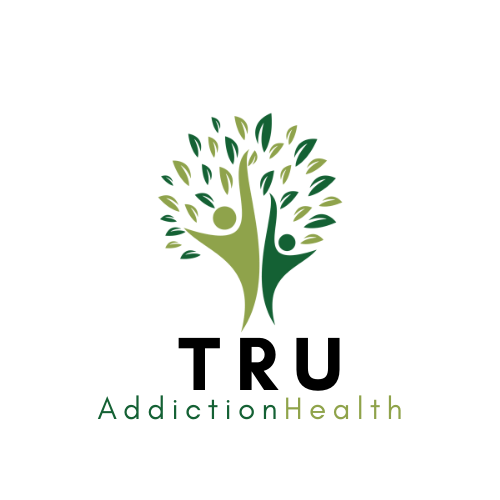
When battling addiction, individuals occasionally require assistance. Addiction to drugs or alcohol can be extremely destructive, and people frequently require assistance to recover and return to a healthy lifestyle.
Getting off drugs or alcohol is not an easy task, and depending on the severity of substance addiction and abuse, some individuals may require the assistance of an inpatient drug rehabilitation facility to manage their overwhelming problems.
What some individuals may not realize is that not every drug rehabilitation center is the same. Some offer particular services for particular things, while others do not. Knowing what these centers do and how they function will help determine which one a person may need.
If you’re considering inpatient rehabilitation facilities, you may have questions, and you’ll certainly need to understand the fundamentals of what these facilities do.
This guide will help you understand the ins and outs of inpatient drug rehabilitation centers and answer any questions you may have.
What is an Inpatient Drug Rehab Facility?
There are numerous types of treatment available for those who suffer from drug and alcohol dependence. One of the most desired is an inpatient drug treatment facility.
These are treatment facilities that offer drug-dependent individuals assistance 24 hours a day, seven days a week. They provide supervision, care, and assistance, as well as impose structure on the most in need individuals.
These residential treatment programs are intended to restore people’s lives in a safe and compassionate manner. Patients will have access to all the usual amenities, whether they have their own room or share with another patient.
Residents will have access to three meals per day at regular times in order to acclimate them to a normal routine and reset their internal clock. This level of structure can also benefit individuals with eating and sleeping disorders.
In most cases, their schedule will include group therapy and individual therapy sessions to discuss their addiction and ongoing treatment and recovery progress.
The average length of stay for a resident is one month (30 days), but it is not uncommon for people to stay longer, depending on their level of addiction and severity of abuse.
Away from negative distractions or a poorly structured home life, both of which can contribute to an individual’s addiction, many individuals who attend these facilities make significant progress. With trained professionals and other residents present, a person’s chances of achieving sobriety are greatly increased.
What is Addiction?

When it comes to comprehending inpatient rehabilitation centers, we must first comprehend certain aspects of addiction.
Addiction affects the brain and can result in the manifestation of psychological and physiological symptoms. Similar to other brain diseases, it cannot be “cured” and must be treated in a safe and organized manner.
Inpatient treatment centers are an excellent method for achieving this objective. Staff members are aware that addiction is a complex disease for which there is no “one-size-fits-all” treatment. Taking into account a person’s substance use, psychology, history, and general health, individualized treatment plans must be designed for each individual.
There are a few principles that treatment centers should adhere to, and they include:
- The treatment will be readily available.
- If assistance is required, treatment will go beyond substance abuse (for example with mental health)
- There is a correlation between the length of time spent in substance abuse treatment programs and the likelihood of success.
- With a singular focus on behavioral therapy, long-term recovery is possible.
- Some recoveries from addiction may necessitate medication.
- Detox is only the beginning, and much more effort is required for someone to achieve success.
- Health screenings for infections and other diseases must be easily accessible.
The most effective method for assisting a person is to assess them individually and gain a thorough understanding of their circumstances, origins, and reasons for their substance addiction. Due to the fact that there is no “one-size-fits-all” solution, the care a person receives will be determined by a careful evaluation of each individual.
How does the normal treatment process work?
The treatment process may be lengthy and ongoing. A person may be going through a very difficult time, or they may be doing quite well, so professionals on hand will consider the individual’s specific needs and how much additional assistance they may require during difficult times.
Each facility should offer both inpatient and outpatient services, and it is entirely possible for an inpatient to transition to outpatient care until they are ready to advance further.
Initially, the first step will be detoxing, which is when a person “cleanses” their body and system of all substances. A person can detox safely in one of these centers with 24-hour care while experiencing potentially dangerous situations such as withdrawal.
This is medically managed by the center’s staff, so the patient does not experience a dangerous withdrawal phase. The staff will continue to monitor the patients to ensure their safety in the interim.
When centers assist with the physical symptoms, they also assist with psychological concerns, such as mental health disorders that may be related to substance abuse.
Due to the nature of an inpatient program, the levels of care extend beyond the conventional types of therapy. This inpatient addiction treatment model is called the Therapeutic Community (TC).
This community is nearly the backbone of the vital medical and mental health treatments administered by the treatment team. The community is the network of support that you share with professionals.
This type of therapy enables individuals to experience a normal life and attempt to improve aspects of the “outside world” such as employment and financial advice.
What transpires in one of these treatment centers will depend heavily on the individual’s circumstances. A prospective patient may participate in group therapies, personal one-on-one therapies, behavioral therapies such as cognitive behavioral therapy (CBT), and even projects as part of their treatment.
The duration of these program services may vary depending on the individual. Typically, 30 days is the minimum, but this can last for months. Everything depends on the individual in question. Individuals with co-occurring mental health conditions are more likely to receive longer inpatient care.
Who could need inpatient detox treatment?
Those who require the assistance and services of an inpatient drug rehab center are typically referred by a medical professional, such as a physician, but self-referral is also common.
Residential treatment is not for everyone, but if a doctor has evaluated a patient’s situation and determined that they will benefit from this type of treatment, they may be admitted following an initial consultation.

A number of external factors will determine whether a person with, for instance, an alcohol addiction requires this type of therapy. Some patients may benefit more from an outpatient program, but trained professionals will make these determinations.
Providers of these services may have specific eligibility criteria for those they believe will benefit from inpatient rehabilitation. A thorough evaluation of a person’s medical health, including their body and mind, as well as their past, may be conducted.
Providers may also consider what a potential patient may or may not require for medical or psychological reasons.
Typically, the criteria are evidence-based, but professionals will evaluate an individual’s need for inpatient care and participation in their program.
However, if you believe you could benefit from attending residential treatment centers, you should always reach out to someone who can assist you.
Is Inpatient Detox Necessary?
Detoxification is essential to the overall program. This is the time when withdrawal symptoms begin to manifest, and while they are not always fatal, they can be sometimes.
Involvement in inpatient rehabilitation programs enables professionals to ensure a patient’s safety and provide an individualized treatment plan. During the withdrawal phase of detoxification, an individual may experience:
- Headaches
- Nausea
- Insatiable cravings
- Appetite fluctuates
- Vomiting
- Diarrhea
- Muscle pains
- Flu like symptoms
- Fatigue
- Sleeping problems
- Tremors
Drug abuse and drug addiction can have severe consequences; therefore, having a support system in an addiction treatment center is crucial to your success in overcoming your addiction and moving on with your life.
My health insurance will cover treatment, right?
Generally, yes; however, the extent of your coverage will depend on your insurance provider. It is advisable to review your policy and speak with your provider to determine what is covered and what additional costs you may incur.
The Bottom Line
Using one of these inpatient facilities is one of the most effective methods for treating alcoholism and drug addiction, which are both extremely difficult to overcome. If you believe you require assistance with alcohol or drugs, you should consult your physician or another healthcare professional.
Call us today to speak immediately with an addiction expert who is trained to give you the best care possible: (866) 469-0954
